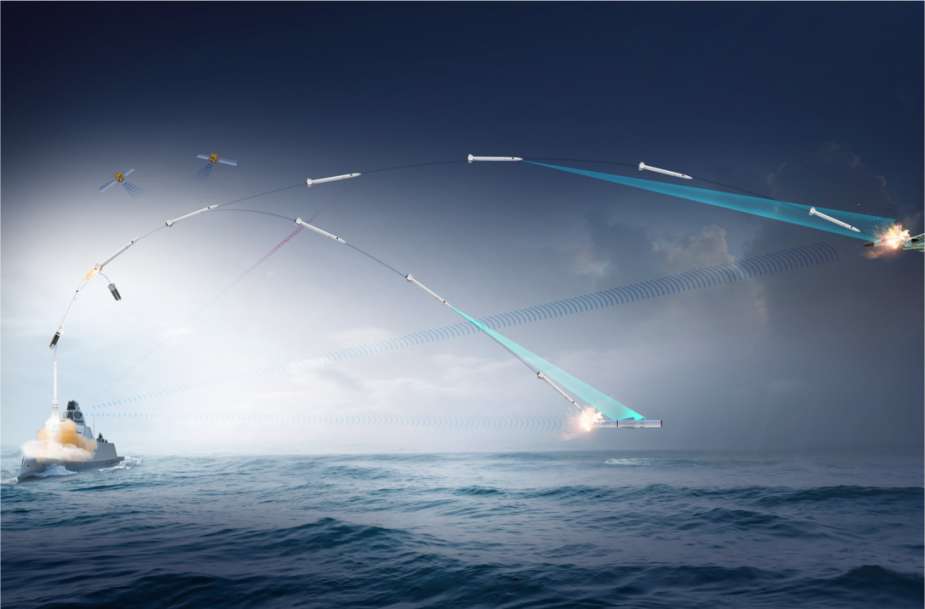Breaking news
South Korean Navy to integrate locally-made Ship-to-Air Missile-II in future KDDX destroyers.
According to the South Korean official media KTV on March 15, 2024, the South Korean Defense Acquisition Program Administration (DAPA) awarded a contract valued at 330.6 billion won (approximately $247.796 million) to LIG Nex1 for the development of a new long-range anti-aircraft defense system, named the Fleet Shared Ballistic Missile-II. This system is intended to potentially replace the American SM series missiles on the future KDDX next-generation destroyers.
Follow Navy Recognition on Google News at this link
 According to sources, the Ship-to-Air Missile-II could replace the American SM series missiles currently utilized by South Korea. (Picture source: DAPA)
According to sources, the Ship-to-Air Missile-II could replace the American SM series missiles currently utilized by South Korea. (Picture source: DAPA)
The 'Fleet Shared Ballistic Missile-II System Development Project', also known as the Ship-to-Air Missile-II, aims to enhance the defensive capabilities of the KDDX destroyers against aerial threats, including aircraft and cruise missiles, potentially from North Korea. The project targets a localization rate of over 90% for the missile system, incorporating technologies to improve precision guidance and navigation.
According to sources, the Ship-to-Air Missile-II could replace the American SM series missiles currently utilized by South Korea. It is designed to be larger than the SM-2MR Block IIIA and employs an initial booster derived from the TSLM land attack missile, which itself is a modification of the C-Star anti-ship missile. Features of the missile include a range exceeding 180 kilometers, supported by booster and dual-pulse propulsion systems, and guidance independent of external illuminators. The system aims to integrate South Korea's advanced missile guidance systems and seeker technologies, including a 1kW GaNSSPA seeker.
Furthermore, the Ship-to-Air Missile-II is visually similar to the existing L-SAM (AAM), with modifications that include the addition of an initial booster and enhanced guidance units and seekers. In parallel, South Korea is reportedly developing the 'Ship-to-Air-II (ABM)' missile program, aimed at creating a maritime version of the land-based THAAD system, referred to as M-SAM-III, which is currently under development.
The Republic of Korea Navy (ROK Navy) is planning to introduce a new class of warships, the Korean Next-Generation Destroyer (KDDX), developed by Hyundai Heavy Industries and Daewoo Shipbuilding & Marine Engineering. These stealth guided-missile destroyers, slated for introduction post-2025, are intended to update and augment the current South Korean fleet. Specifications for the KDDX ships include an estimated displacement of 8,000 tons, a length of 155 meters, a breadth of 18.8 meters, and a draft of 9.5 meters.
Originating from discussions in 2009, the KDDX-class destroyers are designed to enhance the South Korean Navy's capabilities with improved stealth features, advanced sensors, and missile defense systems. They aim to bridge the gap in capacity between the existing Chungmugong Yi Sun-sin-class destroyers (KDX-II) and Sejong the Great-class destroyers (KDX-III), while also aiming for lower operational costs than the Sejong the Great-class.
Throughout its development, the KDDX project has seen several shifts, notably a temporary diversion of resources to the procurement of three additional KDX-III Batch II destroyers in 2013, leading to a delay in the KDDX project. It was later revisited and received approval from the 118th Defense Program Promotion Committee in 2018.
The anticipated financial investment for the development and construction of the six KDDX vessels is significant, with total costs expected to exceed 7.8 trillion won (approximately $6.2 billion), encompassing both development and production expenses.
The design of the KDDX-class incorporates advanced technologies such as an integrated mast system, demonstrated by Hanwha Systems in 2017, which consolidates electronic warfare, enemy identification, and communication systems. Moreover, the ships are slated to be outfitted with the L-SAM multi-purpose phased array radar and the Korean Vertical Launching System (KVLS), enabling the launch of various missile types, including Hyunmoo-3C cruise missiles, SM-2 surface-to-air missiles, and SSM-700K anti-ship missiles.
Although there are comparisons between the KDDX-class destroyers and the European FREMM-class frigates regarding size, radar systems, and armament, the KDDX-class has been distinctly designed to meet the specific needs of the Republic of Korea Navy, featuring double the number of VLS and a larger full-load displacement of 8,000 tons.



























